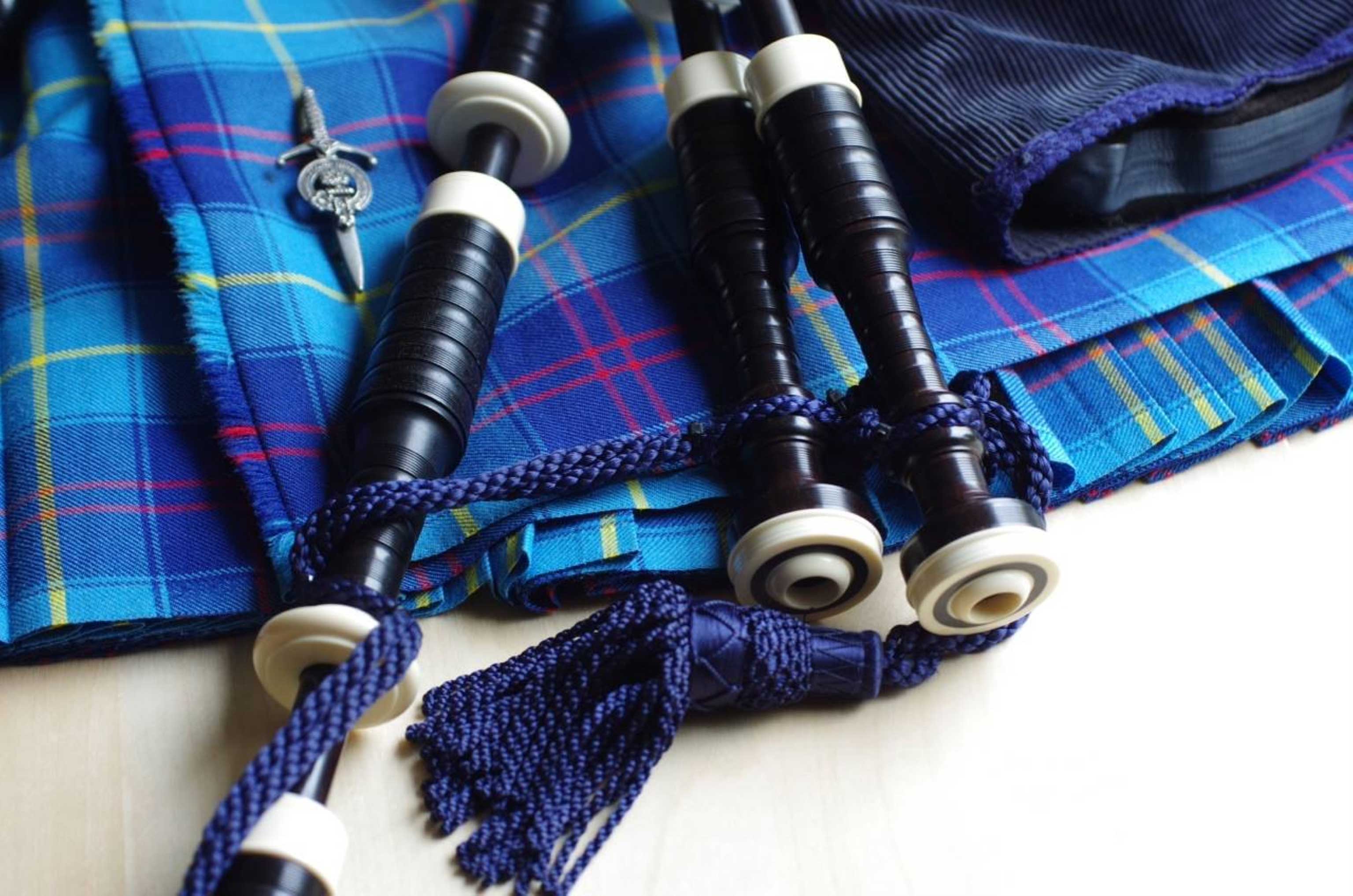The historie of the bagpipe
The Bagpipe
 The bagpipe has a long and honorable history that can be traced back to the beginning of our civilization because it is one of the oldest, played by man, instruments. Presumably it has started in the far East where a simple chanter and drone were played at the same time. Later they were attached to a bag of animal skin and features a blow-pipe so that a primitive form of the instrument that we know today was born. In this form the instrument played by the itinerant minstrels/Bards allegedly responsible for most, at that time, played music.
The bagpipe has a long and honorable history that can be traced back to the beginning of our civilization because it is one of the oldest, played by man, instruments. Presumably it has started in the far East where a simple chanter and drone were played at the same time. Later they were attached to a bag of animal skin and features a blow-pipe so that a primitive form of the instrument that we know today was born. In this form the instrument played by the itinerant minstrels/Bards allegedly responsible for most, at that time, played music.
Another theory is that Italian Crusaders “suspected” of music. The theory would be that they would be no longer welcome after the crusades in Crimona (what might possibly be traced to the macCrimmons) and travelled to the British Isles. Over the centuries the instrument remained popular and during the Middle Ages it was, still in its primitive form, one of the most common instruments in the countries of South, Central and Western Europe.
Unfortunately, in many countries the indoor music (piano, guitar, etc.) growing in popularity. The bagpipes virtually disappeared in most countries.
Scottish Highlands
In the Scottish Highlands its history is different: This martial music did well at the warlike spirit of the population there and the fact that the Highlands were not “suburbed” meant that there was more free space and therefore more opportunity to outdoor play.

The original form of the instrument with a bag, a chanter, one drone and a Blowpipe remained unchanged until about 1500. When a second drone was added. Around 1700, again 200 years later, came a third drone, the bassdrone. The bagpipes fitted well in the Clan system that was in use at the time. The chieftains of the clans had their own pipers, in many cases a hereditary Court.
Schools (classes) were set up for bagpipe lessons. In these colleges the Ceol was developed: Mor or Piobaireachd: the classical music of the bagpipes that can stand the comparison with the greatest compositions from the further music world.
The most famous of those colleges was the MacCrimmons in Boreraig on the Isle of Skye. The MacCrimmons were the hereditary pipers to the MacLeods of Dunvegan and they retained this post for 200 years. This school was founded around 1590. They taught the pipers from across the Highlands and went through a heavy training, ceòl mór (piobaireachd) fora bout 7 years and sometimes even up to11 years.
The official school materials remained inside and were strictly forbidden to outsiders. Also it was strictly prohibited to play Ceol: Aotrom (Light music) in the school play. Later there are tunes that have been written around Canntaireachd in 1811. Donald MacDonald-bagpipes, builder from Edinburgh was converted in the contemporary musical notation. In 1822 he claimed to have presented the first collective work.
The genius system what the MacCrimmons used when they had their school from 1590 until 1745 on the Isle of Skye.
Using musical notation as manual for singing (to chant), putting more feeling into it with the right note values (especially the shorter nuts!), better points and more expression. They have many masterpieces of Ceol: Mor composed which we most tunes still have and play.
After the rebellion of the Jacobites in 1745 playing the bagpipes and wearing a kilt was banned in Scotland. This law was maintained with force. The Colleges disappeared and the hereditary families of pipers (the hereditary pipers) fell apart. During this time and also many years afterwards there was the great danger that also here the bagpipes would disappear.
In London, Edinburgh and other places Highland Societies were founded with the goal to uphold the traditions of life in the Highlands and that Societies started organizing bagpipe competitions. The prices were a range from a bag of gunpowder to a gun, shield or sword.
The bagpipe was also the favorite instrument of the Scottish soldiers who went in ever greater numbers in the British army.
Bill Millen, the d-day piper (who died at the age of 88 on) has played a large role on 6th June (1944) on the beach during the allied attack on the Germans.
All this has helped in the revival and the popularity of the bagpipes, so his survival was secured. The bagpipe has more and more increased in popularity and is now known all over the world and is also widely played.
Anyone who wants to be a piper can be proud that this is a noble instrument with a great tradition. The instrument can produce beautiful music and beautiful music has been composed throughout time.




